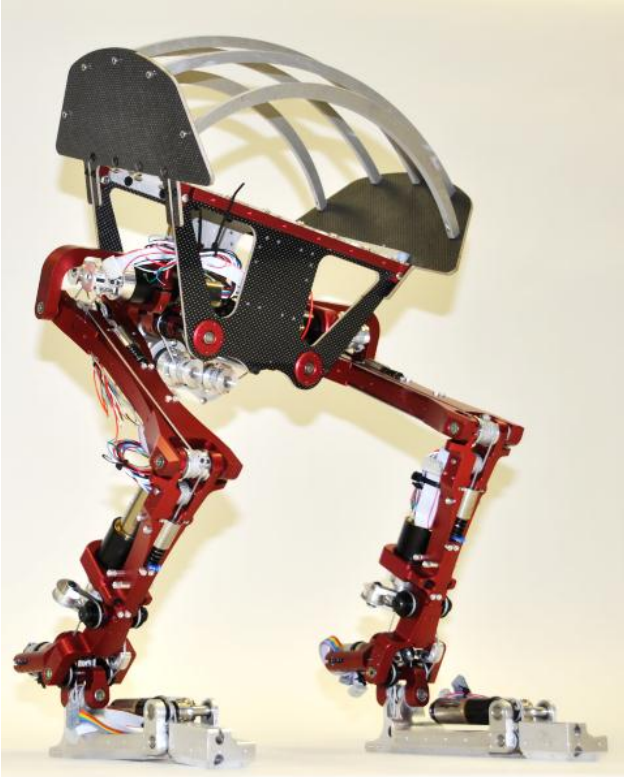Bipedal Walking
WPI, Major Qualifying Project: January 2016-Present
Let's do efficient walking controls!

This robot, named "Caminante", was built several years earlier but was abandoned without anybody having developed its control system. For my senior capstone, I lead a team of 5 students to resurrect this machine, redesign and rebuild much of its mechanics and electronics, and develop walking controls for it from scratch. The robot has a number of interesting features, foremost among them being the series-elastic driven joints. Each joint is connected to a motor through a system of springs and cables; these springs could allow for walking gaits that leverage them as energy storage during each stride, thus requiring less energy input from the batteries.
Over the course of the project we developed walking controls for the robot in simulation and on the real platform. An early version of walking in simulation can be seen below, with full physics. After a goal is selected, footsteps are planned and a trajectory is calculated for the center-of-mass and zero moment point (ZMP) of the robot using non-convex optimization techniques. To control the robot along this trajectory, a simplified model of just the ZMP dynamics is first used to determine the optimal cost-to-go using a standard time-varying LQR approach. Then, a quadratic program formulation of the full system - including actuator saturations, contact forces, and other nonlinear constraints - is used to solve for the true control inputs needed to minimize the cost-to-go. Our strategy is based on methods developed by Scott Kuindersma and others at MIT for their entry in the DARPA Robotics Challenge. While we had promising results in simulation, the cable-driven series-elastic actuation method led to many unanticipated challenges, and Caminante did not end up walking outside of our simulators.